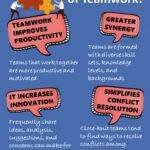
The Mystery of a Bank Robbery
The mystery of a bank robbery is a complex problem-solving task for focus on effective communication
and the leadership.
Gather your group and ask them to sit a small distance away from one another. Announce that the local bank has been robbed and your group’s task is to act as detectives to solve the mystery.
In advance, print each of the 24 clues on separate slips of paper and distribute one clue to each person: 24 clues to print
Instruct each person that they may read their clue out loud to others, but they must never show or display it to anyone.
Explain that the group has all of the information it will need to solve the case. Challenge your group to identify who committed the robbery and the alibis for all other suspects, ie where were they when the robbery actually occurred.
Allow 20 to 30 minutes for your group to solve the case. And remind your group that the solution is found within the clues.
Solution
- The Charitys worked together to rob the bank.
- Margaret Charity supplied the
front-door key that she had borrowed from Mr Moneybags. - Her brother, George
Charity, supplied the dynamite. - Mr Moneybags had already left for Mexico when the robbery took place.
- Peter Smith was already in Atlantic City on the night of the robbery. The
Charitys were lying when they tried to frame him for the robbery. - John Rosales was at Aimee Chang’s parents’ house.
- There was no evidence that Mr Moneybags’s brother John Poorman had
anything to do with the robbery.
Moment of Reflection
- How did your way of working together change as the activity progressed?
- If you figured out the mystery, was it easy or hard to do so? How did your group come up with the answer?
- If the group didn’t figure out the mystery, what needed to happen in order for you to do so?
- How did it feel to need every single person to take part in solving the crime? Was anyone overlooked or did anyone dominate the process? How did this affect your group’s success?
- What steps can be taken to make sure everyone on your team is included when working toward a certain goal?
- What happened when someone forgot a clue or made an incorrect connection between clues? How did your group communicate and react in this situation?
- At what point did the task or problem start to become clear? How?
- How might this activity teach us a lesson about solving problems and making decisions?
The topics of this publication: interactions, active listening, critical thinking, argumentation, debate, discussion, adaptability skills, collaboration, teamwork, cooperation, leadership, strategy


